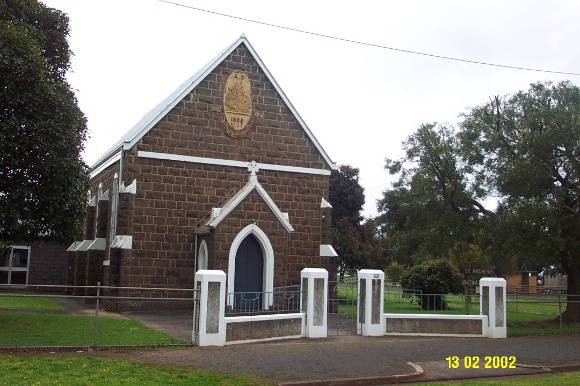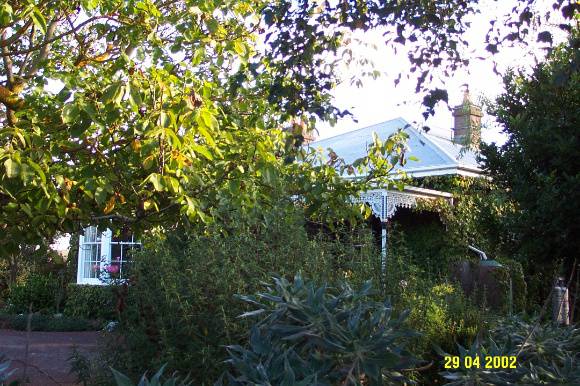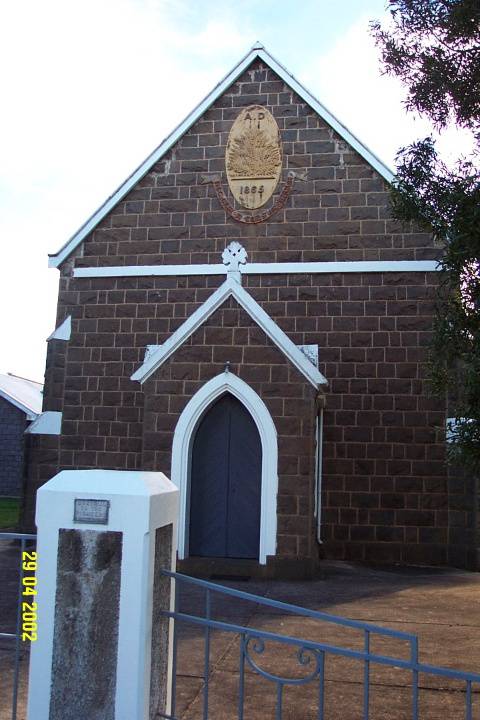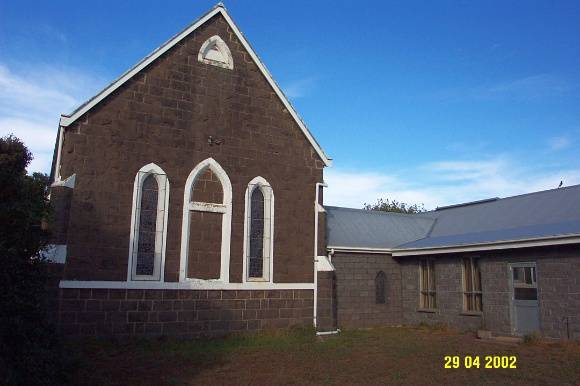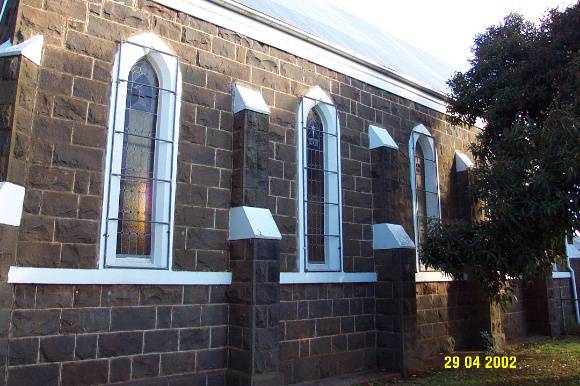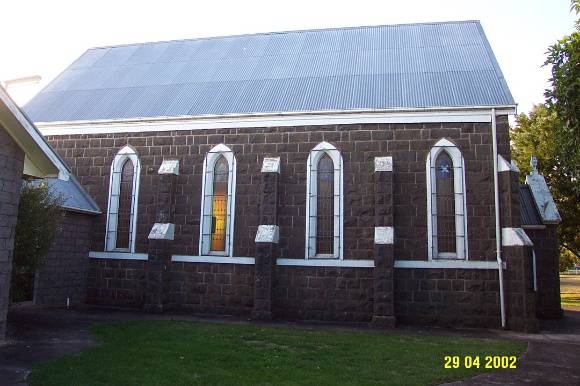| Back to search results » | Back to search page » |
|
ST ANDREW'S UNITING CHURCH
Other NameST ANDREW'S PRESBYTERIAN CHURCH LocationMartin Street PENSHURST, Southern Grampians Shire
File Number84LevelStage 2 study complete |
|
Statement of Significance
What is significant?
St Andrew's Uniting Church, formerly Presbyterian, is located on the west side of Martin Street, in the centre of Penshurst. The bluestone church was completed in 1865 and is built in the Early English version of the Gothic revival style, a departure from the Classical stream previously associated with Presbyterianism. The architect is not known for certain, but J. M. Knight (the Shire of Mount Rouse Engineer and Secretary) and A. Kerr seem very likely. A roughcast fence The gable incorporates an unusual device in contrasting stone, a nimbus around the Burning Bush representing Christ non-figuratively and Eternal Life. The church was associated with major landholders of the district, Mrs Daniel Ritchie of Blackwood laying the foundation stone. The first minister was Rev Robert Falconer. In the later 1880s, the church was associated with the temperance movement through the incumbent, Rev. J. Ringland Anderson, MA. Along with most Presbyterian congregations, St Andrew's Penshurst joined the Uniting Church in the 1970s. The church is in excellent condition and retains a high degree of integrity.
How is it significant?
St Andrew's Uniting Church, Martin Street, Penshurst is of historical and architectural significance to the township of Penshurst and to the Southern Grampians Shire.
Why is it significant?
St Andrews Uniting Church is of historical significance as the expression of the role and position of the Presbyterian Church, and subsequently the Uniting Church, and its congregation in the community for over one hundred and fifty years. It is of architectural significance for its use of the Gothic revival style to express religious values, for the range of its memorials, and as a comparison with the churches of other denominations in Penshurst. It is of particular significance for its rare iconographical use of the nimbus form and abstract Biblical symbolism.
Group
Religion
Category
Church


